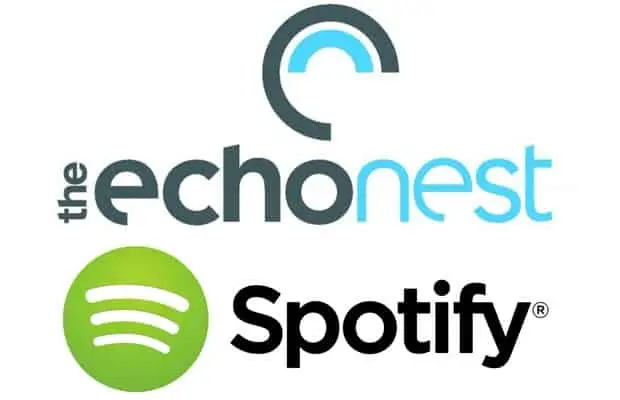So, you just opened your Spotify Wrapped and saw “Permanent Wave” listed as one of your top genres, then paused. Wait… what?
If you’ve found yourself diving down Reddit threads and obscure Google results trying to make sense of it, you’re far from alone. “Permanent Wave” has baffled music fans for years, popping up unexpectedly on streaming platforms with little to no explanation. It’s not a term you’ll see on Billboard charts or even hear in everyday music conversations. And yet, somehow, it manages to include artists as wildly different as The Killers, The Smiths, and Radiohead.
So what gives?
This article breaks down what the Permanent Wave genre really is (at least as far as we can tell). We’ll explore where the name likely comes from, how Spotify and platforms like EchoNest use it, what musical elements tend to fall under the label, and which artists represent the sound.
What Does “Permanent Wave” Even Mean?
Let’s start with the name itself: “Permanent Wave.”
On the surface, it sounds like a cross between a hair salon service and a throwback music term, and honestly, that’s not far off.
The phrase is likely a nod to Permanent Waves , the 1980 album by Canadian prog-rock legends Rush.
That album marked a shift toward more radio-friendly songwriting while still maintaining the band’s signature complexity, mirroring how many “Permanent Wave” artists blend accessibility with depth. At the same time, the term clearly riffs on “New Wave,” a genre that emerged in the late ‘70s and early ‘80s, characterized by synths, quirky aesthetics, and post-punk energy.
But where New Wave was a short-lived surge, “Permanent Wave” suggests music with staying power.
That idea fits with how Spotify (via its EchoNest data engine) builds its genre architecture. Rather than sorting music by traditional definitions, Spotify's algorithm groups songs and artists based on listener behavior, shared sonic qualities, and playlist curation patterns. So basically, “Permanent Wave” is a genre label born from user data, not from a scene or music critic.
Permanent Wave vs. New Wave vs. Alternative Rock
To understand what makes the Permanent Wave genre unique, it helps to compare it to the genres it’s most often confused with. In my eyes, those genres are New Wave and Alternative Rock .
New Wave came about in the late ‘70s and hit its peak in the early-to-mid ‘80s. It was all about reinvention, taking punk rock’s energy and rebellion, but swapping out aggression for irony, synthesizers, and angular guitar riffs.
Think Blondie, Talking Heads, or The Cars. New Wave was sleek, sometimes weird, often catchy, and deeply tied to the aesthetics of its era. It used electronic instruments instead of traditional instruments found in rock or punk rock music.
Permanent Wave , by contrast, can be seen as a post-New Wave evolution.
While it has some of the genre’s sophistication and lyrical bite, it leans more into guitars than synths, and has a broader emotional palette. The sound is often moodier, more introspective, sometimes politically charged, and less likely to follow pop formulas like the big sing-along chorus.
Artists like R.E.M., The Smiths, Smashing Pumpkins, and later acts like Radiohead or The Killers fit this mold. Their music is smart, melodic rock that feels both accessible and artistically grounded. Unlike New Wave, which had a relatively tight cultural moment, the Permanent Wave spans decades, from the early '80s to today.
Alternative Rock , on the other hand, is more of a giant catch-all. It covers everything from grunge and college rock to post-Britpop and beyond.
While Spotify’s "Permanent Wave" genre overlaps heavily with alt-rock, it's a narrower lane, more refined in tone and texture. If alt-rock is the sprawling city, Permanent Wave is the neighborhood.
Characteristics of Permanent Wave Music
So what exactly does the Permanent Wave genre sound like?
Well, it’s not a strict formula, but there are some common threads in the Permanent Wave genre, especially in terms of sonic texture, lyrical content, and overall vibe.
Sonically , Permanent Wave tends to favor clarity and mood over chaos. You’ll often hear clean, chiming guitar tones , melodic basslines , and tight, steady drum patterns . Unlike punk or grunge, which thrive on distortion and rough edges, Permanent Wave leans toward polished production . It's not necessarily glossy like pure pop, but it is thoughtfully layered.
You may hear synths, especially in bands with New Wave DNA, but they’re rarely the centerpiece.
Lyrically , Permanent Wave songs can span across the emotional and thematic range. If I think of some of the bands I listed above, it brings me to feelings of alienation, irony, disillusionment, romance, existential angst , and occasionally sociopolitical critique .
There’s often a poetic or cerebral quality to Permanent Wave song lyrics. It’s music that embraces melancholy , but doesn’t wallow. So while a song from The Killers can be yearning, wistful, and romantic ; one from Radiohead could be cathartic and euphoric . It depends on the artist.
The overall vibe is one of thoughtful coolness.
Permanent Wave artists often project an intellectual or artistic edge . There's emotional depth with a deliberate sense of aesthetic. With a retro-modern blend at play, Permanent Wave music borrows from the past but feels timeless. Whether you’re listening to The Cure, Arcade Fire, or Fiona Apple, there’s something about Permanent Wave that lingers.
Spotify and the Rise of Microgenres
We can thank Spotify’s genre system for the Permanent Wave music classification. This is because it isn’t built like traditional music classifications. Instead of relying on record labels or critical consensus, it leans on data, and lots of it.

Much of this system comes from The EchoNest , a music intelligence platform Spotify acquired in 2014. EchoNest analyzes everything from tempo, instrumentation, and key to playlist behavior and user listening patterns to group songs and artists into hyper-specific genres.
That’s where terms like “Permanent Wave” come from.
Rather than being tied to a specific sound or era, Permanent Wave is a behavior-driven genre . If you routinely listen to artists like The Killers, Radiohead, R.E.M., or The Smashing Pumpkins, especially in succession or on the same playlists, Spotify may label that listening style as “Permanent Wave.” It’s less about what these bands have in common musically, and more about how they function together in a listening experience.
This is part of Spotify’s broader trend toward microgenres : oddly specific categories like "escape room," "vapor twitch," or "gloomcore." These aren’t genres in the traditional sense, but rather algorithmically determined vibes . And while that can be confusing, it also reflects how people actually consume music today. It's not by strict genre lines, but by mood, aesthetic, and emotional resonance .
Iconic Artists That Fall Under Permanent Wave
Because Permanent Wave music isn’t a tightly defined genre, its artist roster stretches far and wide. What links these artists is a shared emotional tone, sonic depth, and staying power. Below are some of the most iconic acts typically grouped under the Permanent Wave umbrella, broken down by influence and era.
Foundational Artists
R.E.M.
https://www.youtube.com/watch?v=xwtdhWltSIg
Arguably one of the most influential bands in college rock and alternative history, R.E.M. blended jangly guitars, abstract lyrics, and melancholy melodies to define the sound of thoughtful, literate rock. “Losing My Religion” embodies the introspective mood central to Permanent Wave music.
The Smiths
https://www.youtube.com/watch?v=3r-qDvD3F3c
With biting wit and emotional vulnerability, The Smiths mastered the art of beautiful sadness. Morrissey’s dramatic vocals and Johnny Marr’s shimmering guitar work created songs that feel both timeless and devastating. “There Is a Light That Never Goes Out" is a great example.
The Cure
https://www.youtube.com/watch?v=mGgMZpGYiy8
From gothic melancholy to upbeat pop, The Cure proved that gloomy could also be catchy. Their dreamy textures, clean guitar tones, and emotional openness make them a core part of the Permanent Wave genre lineage.
Talking Heads
https://www.youtube.com/watch?v=5IsSpAOD6K8
A cerebral and funky art-rock band, Talking Heads injected New Wave with African rhythms, political commentary, and surrealism. “Once in a Lifetime” is a masterclass in making weird ideas incredibly danceable.
Second Wave / ‘90s Alt Boom
Radiohead
https://www.youtube.com/watch?v=n5h0qHwNrHk
No strangers to reinvention, Radiohead’s emotionally layered sound, from OK Computer to In Rainbows , pushed alternative rock into more avant-garde territory while maintaining a dedicated fanbase and lasting cultural relevance.
The Smashing Pumpkins
https://www.youtube.com/watch?v=4aeETEoNfOg
Fusing shoegaze, metal, and dream pop, the Pumpkins made epic, emotionally charged rock. Tracks like “1979” feel nostalgic, shimmering, and undeniably Permanent Wave in vibe.
Nirvana
https://www.youtube.com/watch?v=GrLUUVfKeUw
Grunge icons, yes, but Nirvana’s emotional depth and stripped-down, introspective lyrics (especially on In Utero ) bridge the raw honesty of punk with the thoughtfulness of the Permanent Wave genre.
Weezer
https://www.youtube.com/watch?v=OoPHItnUFkw
Weezer took self-aware sadness and wrapped it in power pop riffs. Their debut album cemented them as kings of “nerd rock,” a quirky, sincere strand of the genre.
Modern Mainstays
Muse
https://www.youtube.com/watch?v=w8KQmps-Sog
Muse brought arena-level drama to the genre, blending glam, prog, and dystopian themes with massive hooks. Their theatrical sound is both grand and brooding.
Arctic Monkeys
https://www.youtube.com/watch?v=bpOSxM0rNPM
Starting as gritty rock revivalists, the Monkeys evolved into smooth, lounge-influenced crooners. Albums like AM feel sleek yet introspective. It's Permanent Wave to the core.
The Killers
https://www.youtube.com/watch?v=gGdGFtwCNBE
Big synths, bigger emotions. The Killers’ fusion of 2000s indie rock and ‘80s new wave nostalgia ( “Mr. Brightside” , anyone?) captures that blend of introspection and accessibility.
Coldplay
https://www.youtube.com/watch?v=AiebvAkb4LM
While often polarizing, Coldplay’s early work ( Parachutes , A Rush of Blood to the Head ) showcased emotional vulnerability and melodic clarity, landing them squarely in the genre’s softer, more romantic wing.
"Permanent Wave” As a Catch-All, And That’s Okay
Part of the reason the “Permanent Wave” genre causes so much confusion is that it’s vague . It’s not a genre with a clear sound or a historical movement behind it. It doesn’t have a signature instrument or fashion trend. It’s not even a term most artists use to describe themselves.
But that’s kind of the point.
Permanent Wave works best as a mood-based umbrella . It's a “middle zone” between punk’s edge and pop’s accessibility. It captures that sweet spot where thoughtful lyrics meet catchy melodies, where indie cred doesn’t sacrifice emotional resonance. It’s music that feels a little too deep for the Top 40, but too polished for the basement DIY scene.
In many ways, the Permanent Wave genre is Spotify’s answer to Classic Rock, but for fans of alternative and indie music. Just as Classic Rock bundles together everything from Led Zeppelin to Fleetwood Mac, Permanent Wave pulls from a wide pool of influential alt acts, past and present, that continue to shape how people listen and feel.
So yes, it’s a catch-all. But it’s a useful one. If your music taste lives in that thoughtful, melodic, slightly off-center space, chances are you’re already riding the wave, you just didn’t know what to call it.
So, What Is Permanent Wave Music?
Well, hopefully the above article answers all the questions you could possibly have about Permanent Wave music.
At the end of the day, Permanent Wave isn’t so much a genre as it is a cultural time capsule. It's a curated vibe that captures decades of alternative music and exists somewhere between pop and punk, New Wave and indie rock.
A lot of Permanent Wave music blends thoughtful lyrics, clean production, and just enough edge to keep things interesting.
What makes Permanent Wave music so compelling is also what makes it confusing. That's its diversity . There’s no single sound that defines it, but rather a shared atmosphere. It's moody and melodic like new wave music, cool like alternative rock, and edgy with post punk influences. That’s why artists as different as R.E.M., Muse, and The Cure can all live under the same playlist banner in their own genre.
And if you found yourself Googling “What is Permanent Wave Music?” after seeing it on Spotify, you’re not alone. Hundreds of other curious listeners have done the same, and that sense of mystery is part of the charm.
If you want to listen to some Permanent Wave music, I'd recommend starting with this Spotify playlist:
https://open.spotify.com/playlist/4EYSGTuqe9cVfSVpX4gtGv?si=65d791a2ae4e453a
Enjoy!





